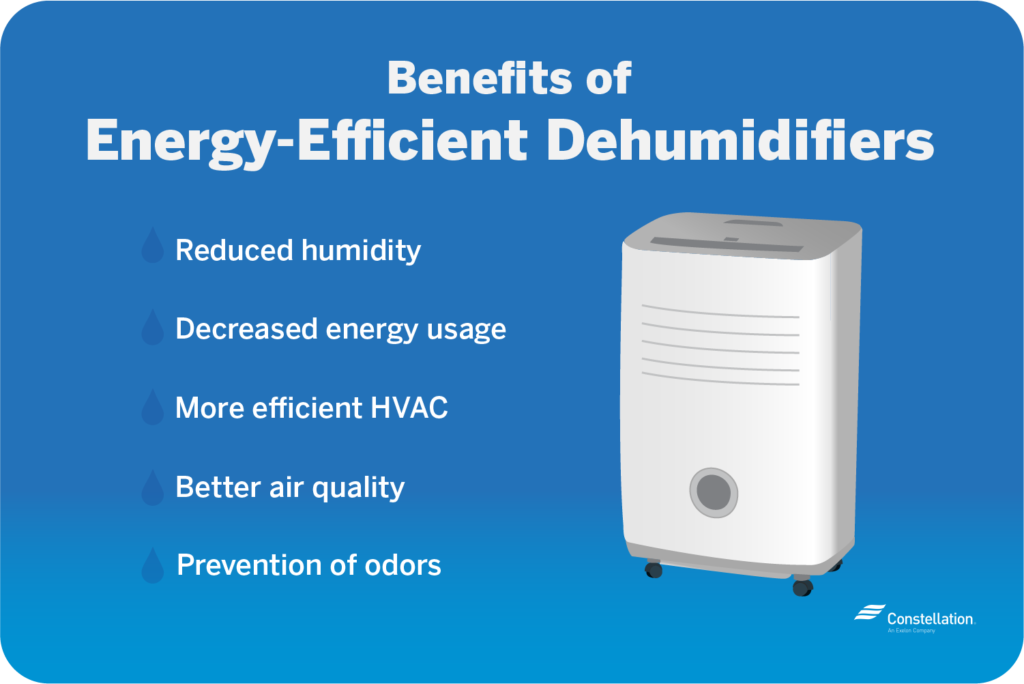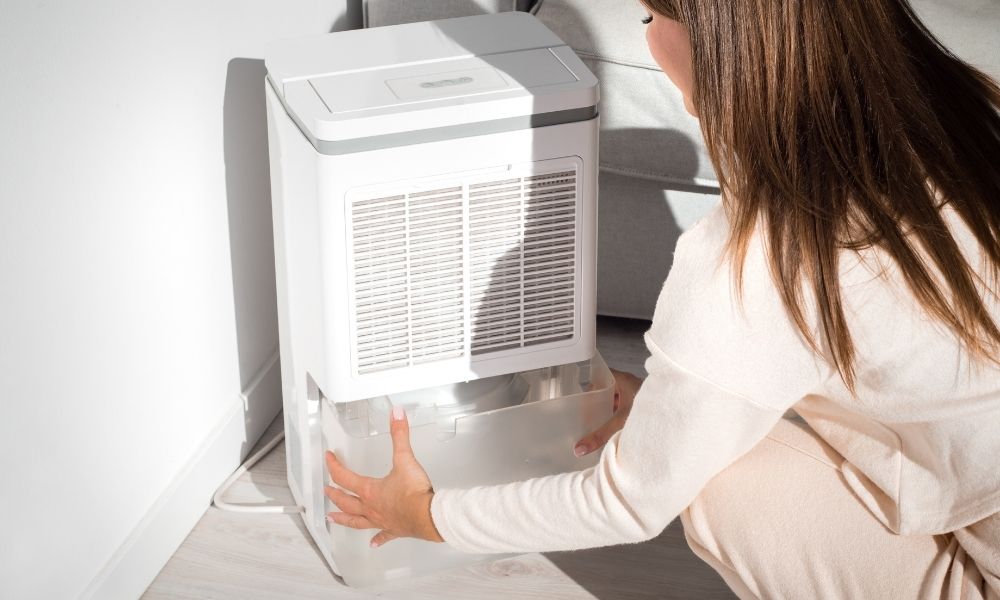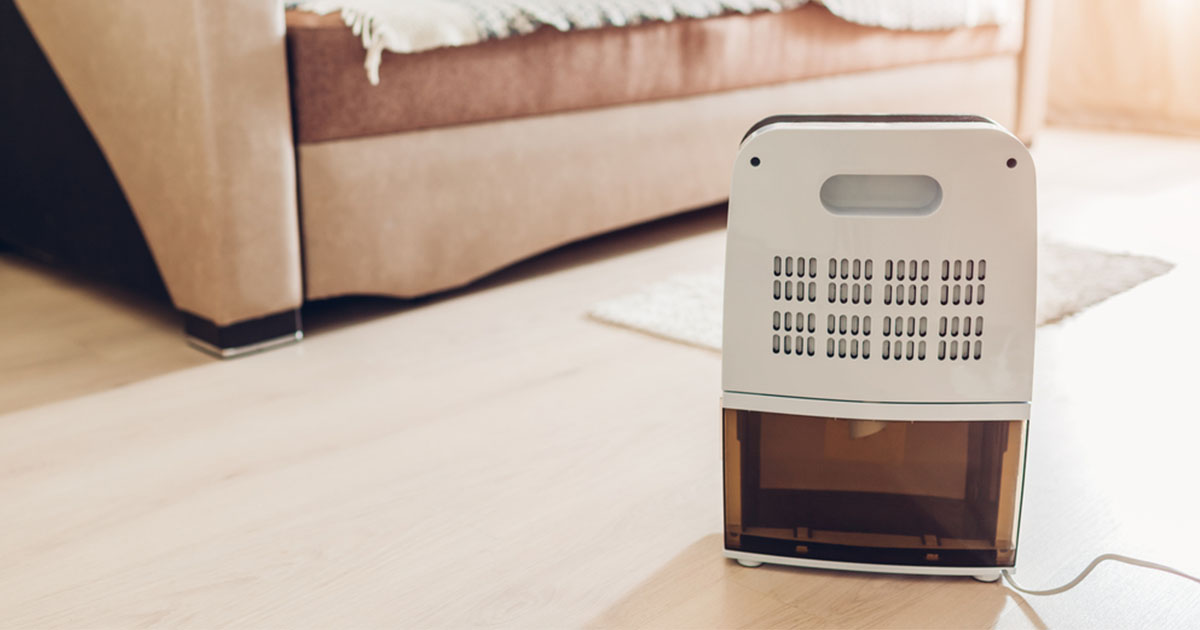Having a dehumidifier can be a game-changer when it comes to creating a comfortable and healthy living space. However, to get the most out of your dehumidifier, it’s important to know how to use it effectively. In this article, you will discover some valuable tips and tricks that will help you maximize the benefits of your dehumidifier, from understanding the ideal humidity levels to strategically placing and maintaining your device. Say goodbye to dampness and hello to a fresh and pleasant environment with these expert-recommended tips for using a dehumidifier effectively.

Choosing the Right Dehumidifier
When it comes to choosing the right dehumidifier for your needs, there are a few key factors to consider. First and foremost, you need to consider the size of your space. If you have a small room, like a bedroom or bathroom, a portable dehumidifier should suffice. However, for larger spaces such as living rooms or basements, you might need a unit with higher capacity.
Speaking of capacity, it is essential to check the dehumidifier’s capacity before making a purchase. The capacity is typically measured in pints and refers to the amount of moisture the dehumidifier can remove from the air in a 24-hour period. Make sure to choose a dehumidifier that can handle the humidity levels in your space.
Another important consideration is energy efficiency. Look for dehumidifiers with the ENERGY STAR label, as they are designed to consume less energy while still effectively removing moisture from the air. This not only helps you save on your energy bills but also reduces your carbon footprint.
Lastly, consider additional features that may enhance your experience with the dehumidifier. Some models come with built-in humidistats, which allow you to set and maintain a specific humidity level. Others may have automatic defrost functions, which prevent the coils from freezing in colder temperatures. Assess your needs and choose a dehumidifier that offers the features that are most important to you.
Placement of the Dehumidifier
Once you have chosen the right dehumidifier for your needs, it’s time to think about its placement within your space. Proper placement plays a crucial role in the effectiveness of the dehumidifier.
Ideally, you should place the dehumidifier in the center of the room. This allows for more even distribution of the dehumidified air throughout the space. If your room layout doesn’t allow for central placement, try to position the unit as close to the center as possible.
Proper air circulation is also important for optimal dehumidifier performance. Ensure that there is sufficient space around the dehumidifier for air to circulate freely. Avoid placing the unit against walls or furniture, as this can impede airflow and reduce its effectiveness.
It’s also crucial to keep the dehumidifier away from any obstructions. Avoid placing it near curtains, furniture, or other objects that could obstruct the air intake or exhaust vents. This ensures that the dehumidifier can function efficiently and effectively remove moisture from the air.
Setting the Ideal Humidity Level
Setting the ideal humidity level is key to maintaining a comfortable and healthy environment in your home. It is important to understand the recommended humidity range for different areas of your home and adjust the settings accordingly.
The recommended humidity range for most living spaces is between 30% and 50%. This range helps to prevent the growth of mold and mildew while also ensuring that the air is not too dry or too damp. However, certain areas like basements might require a lower humidity level, usually around 40%, to prevent moisture-related issues.
To monitor humidity levels accurately, consider using a hygrometer. A hygrometer is a device that measures the amount of moisture present in the air. Place the hygrometer in the room where the dehumidifier is located to get an accurate reading. Adjust the dehumidifier settings accordingly to maintain the desired humidity level.
Remember that the ideal humidity level may vary depending on personal preference and specific circumstances. Experiment with different settings to find the optimal balance of humidity for your comfort and health.
Operating the Dehumidifier
To ensure the proper functioning and longevity of your dehumidifier, it’s important to follow a few guidelines for its operation and maintenance.
One crucial aspect is emptying the water collection container regularly. As the dehumidifier removes moisture from the air, it collects the excess water in a container. Depending on the humidity levels, this container may fill up quickly. Be sure to check it regularly and empty it before it reaches its maximum capacity. Emptying the container regularly prevents overflow and ensures continuous dehumidification.
Additionally, cleaning the filter frequently is essential for optimal performance. Dust, dirt, and other particles in the air can accumulate on the filter, reducing its effectiveness. Follow the manufacturer’s instructions for cleaning the filter, which may involve vacuuming or rinsing it with water. Keeping the filter clean ensures that the dehumidifier can efficiently remove moisture from the air.
Positioning the dehumidifier to drain directly is another useful tip. Some dehumidifiers come with a drainage hose or a built-in pump that allows the unit to drain directly into a sink, drain, or outside. This eliminates the need to empty the water collection container manually. If your dehumidifier doesn’t have this feature, you can also use a hose to redirect the water into a drain or container.
Using the timer and auto shut-off feature can help save energy and ensure convenient operation. Set the timer to turn the dehumidifier on and off at specific times, such as when you are asleep or away from home. The auto shut-off feature automatically turns off the dehumidifier when the desired humidity level is reached, preventing unnecessary operation and energy consumption.

Using a Dehumidifier with Other Appliances
While a dehumidifier can effectively remove excess moisture from the air, it can work even better when used in conjunction with other appliances.
If you have an air conditioner, coordinate its operation with the dehumidifier. Air conditioning naturally removes moisture from the air as it cools, but it may not be sufficient in humid conditions. By using a dehumidifier alongside the air conditioner, you can enjoy a more comfortable and drier indoor environment.
Combining the dehumidifier with a fan can also speed up the moisture removal process. The fan helps to circulate the air and distribute the dehumidified air more evenly throughout the room. This combination is particularly effective in larger spaces where the dehumidifier alone might not be able to reach all areas.
In the winter months when the air tends to be drier, you can use the dehumidifier in conjunction with a heater. While the heater warms the air, the dehumidifier ensures that excessive moisture is removed, creating a more comfortable environment.
Maintaining the Dehumidifier
Proper maintenance is essential to keep your dehumidifier running smoothly and effectively over time. Here are some important steps to maintain your unit:
Regular cleaning and maintenance are necessary to ensure optimal performance. Follow the manufacturer’s instructions for cleaning the interior and exterior of the dehumidifier. Pay special attention to the coils, fan blades, and water collection container. Removing built-up dirt and debris helps the dehumidifier work more efficiently.
Inspect the dehumidifier regularly for any signs of malfunctions or leaks. Check the power cord for fraying or damage and ensure that the unit is functioning as expected. If you notice any issues, contact the manufacturer for support or consider professional servicing.
Consider scheduling professional servicing for your dehumidifier. Professional technicians can deep clean the unit, check for any internal issues, and provide necessary repairs or maintenance. Regular professional servicing can help extend the lifespan of your dehumidifier and ensure optimal performance.

Preventing Mold and Mildew
One of the primary reasons for using a dehumidifier is to prevent the growth of mold and mildew. Here are some tips to prevent their formation:
Fix any water leaks promptly to prevent excessive moisture buildup. Check for leaks in pipes, faucets, and roofs, and repair them as soon as possible. By addressing these issues, you can reduce the overall humidity level in your home and minimize the risk of mold and mildew growth.
Proper ventilation is crucial in areas prone to high humidity, such as the bathroom. Make sure to open windows or use an exhaust fan during and after showers to remove excess moisture. This helps to circulate fresh air and decrease the chances of mold or mildew forming on surfaces.
Damp basements are notorious for mold and mildew growth. Using a dehumidifier in your basement can help to eliminate excess moisture and create a drier environment. Place the dehumidifier in the basement and set it to the appropriate humidity level to maintain a healthy space.
Dealing with Excess Condensation
Excess condensation can lead to an uncomfortable and damp indoor environment. Here are some tips to deal with excess condensation:
Using a dehumidifier in high humidity areas such as bathrooms, laundry rooms, or kitchens can effectively eliminate excess condensation. The dehumidifier removes moisture from the air, reducing condensation on windows, walls, and other surfaces.
Proper insulation is essential in preventing condensation on windows and walls. Insulate your windows with weatherstripping or double-glazed windows to keep the warm air inside and reduce the temperature difference that causes condensation. Additionally, insulating walls and ceilings can help regulate indoor temperature and minimize condensation.
Improving ventilation is another way to reduce excessive condensation. Ensure that there is adequate airflow in your home by opening windows, using exhaust fans, or installing ventilation systems. Proper ventilation helps to remove moisture and reduce the likelihood of condensation.

Avoiding Overuse and Energy Consumption
To minimize energy consumption and ensure responsible usage of your dehumidifier, keep these tips in mind:
Use the dehumidifier only when necessary. While it may be tempting to run the dehumidifier continuously, it’s important to evaluate the humidity levels in your space. If the humidity is within the desired range, you can reduce the operating time of the dehumidifier to save energy. Check the humidity levels regularly using a hygrometer and adjust the settings accordingly.
Setting the humidity level too low can be counterproductive and lead to unnecessary energy consumption. Aim for a comfortable range within the recommended guidelines rather than trying to achieve excessively low humidity levels. This helps to maintain a healthy indoor environment while minimizing energy usage.
Many dehumidifiers come with energy-saving settings, such as the ability to switch to a lower fan speed or reduce the compressor usage. Take advantage of these features to minimize energy consumption. Refer to the user manual or manufacturer’s instructions to explore the energy-saving options available with your specific dehumidifier model.
Understanding Proper Storage
When the dehumidifier is not in use, proper storage is crucial to keep it in good condition and ready for future use. Follow these steps for proper storage:
Before storing the dehumidifier, empty the water collection container completely. Leaving water in the container during storage can lead to the growth of mold or bacteria. Remove any remaining water and ensure the container is completely dry before storing.
Cleaning the dehumidifier thoroughly before storage is also important. Remove the filter and clean it as per the manufacturer’s instructions. Wipe down the interior and exterior of the unit to remove any dust or debris that may have accumulated. Allow the dehumidifier to air dry completely before storing.
Store the dehumidifier in a cool and dry place to prevent damage and ensure its longevity. Avoid storing it in areas prone to temperature extremes or high humidity levels, such as garages or basements. Choose a location where the dehumidifier will be protected from dust, moisture, and potential damage.
By following these storage guidelines, you can ensure that your dehumidifier remains in optimal condition during periods of non-use and is ready to be used again when needed.
In conclusion, using a dehumidifier effectively requires careful consideration of factors such as space size, capacity, energy efficiency, and additional features. Proper placement, maintenance, and awareness of humidity levels are also key. By understanding how to use a dehumidifier effectively, you can create a comfortable and healthy environment in your home while minimizing energy consumption. Remember to monitor and adjust accordingly, and don’t forget to store your dehumidifier correctly during times of non-use.


Hi, I’m Cohan, the author behind Your Dehumidifier Guide, a website dedicated to helping you create a healthier and more comfortable living environment. With a tagline of “Breathe Easy, Live Better,” my ultimate goal is to provide you with the best dehumidification solutions for your home. Whether you’re looking for the perfect dehumidifier for your bathroom, small room, or basement, I’ve got you covered. Through in-depth reviews and comprehensive buying guides, I aim to equip you with the knowledge to tackle high humidity levels, prevent mold growth, and improve your indoor air quality. Trust me to be your ultimate guide in the world of dehumidifiers.